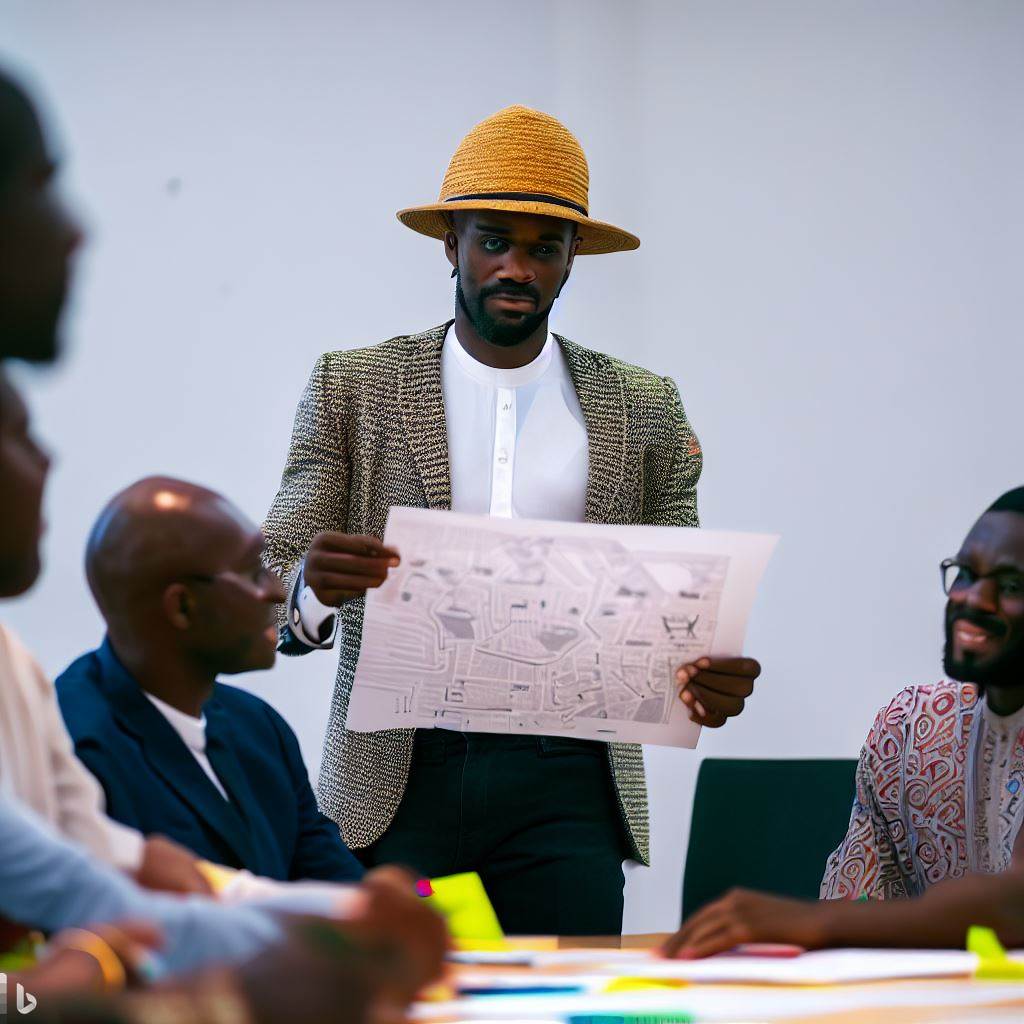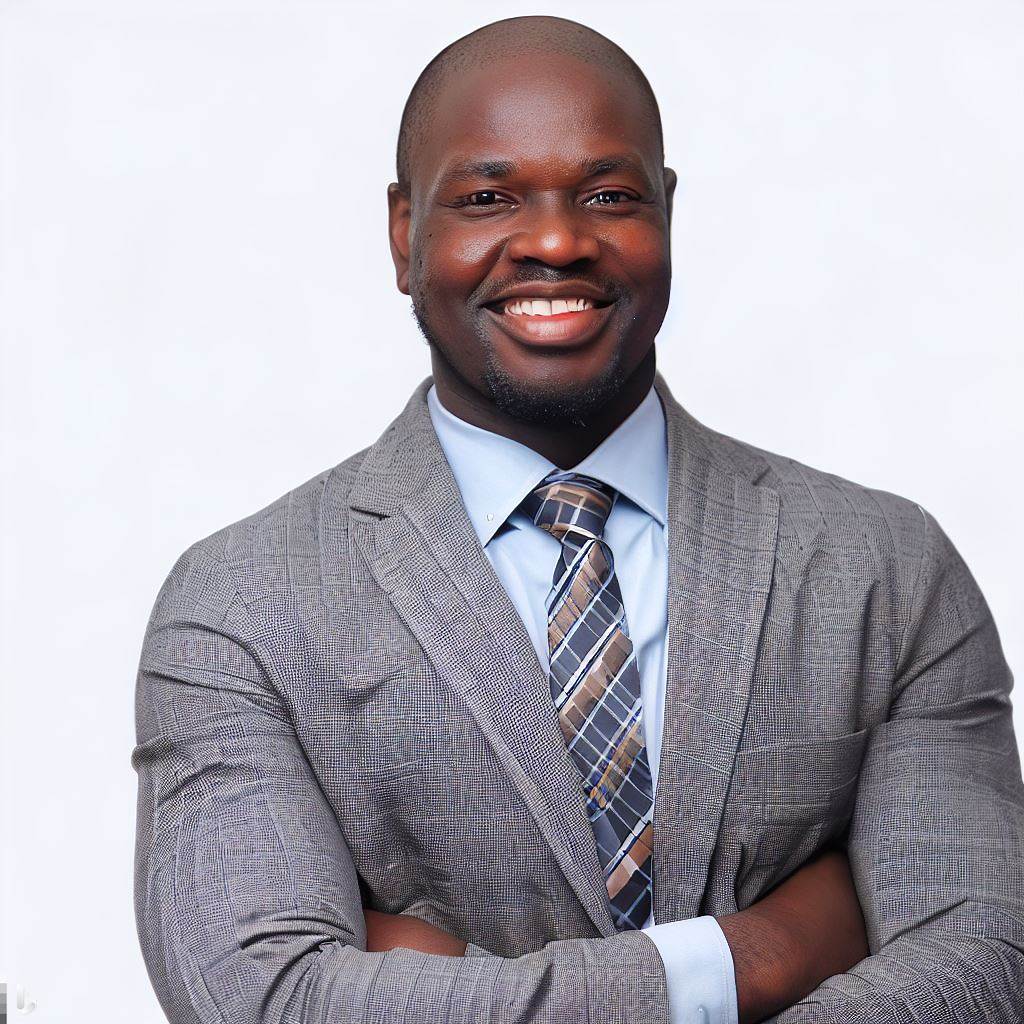Introduction
Nigeria, a country in West Africa, has a rich cultural heritage and a growing urban population. Urban planning in Nigeria faces challenges due to rapid urbanization and cultural diversity.
This section will explore the interplay between culture and urban planning in Nigeria, highlighting the need for cultural sensitivity and inclusivity in urban development.
Urban planning plays a crucial role in shaping cities, ensuring their functionality, and meeting the needs of their residents.
However, in a country like Nigeria, with its diverse cultural landscape and rapid urbanization, the interplay between culture and urban planning becomes even more significant.
Nigeria, often referred to as the “Giant of Africa,” is known for its vibrant cultural traditions and ethnic diversity.
With over 250 ethnic groups, each with its own unique cultural heritage, it poses a challenge for urban planners to develop cities that accommodate and celebrate this cultural diversity.
Urban planning in Nigeria is further complicated by the high rate of urbanization.
As more people migrate from rural areas to cities in search of better opportunities, urban areas have witnessed rapid growth, resulting in overcrowding, inadequate infrastructure, and inadequate access to basic services.
To ensure sustainable urban development, it is essential for urban planners to consider the cultural aspects of a community.
This means recognizing and respecting cultural values, norms, and practices that may influence the design and development of urban spaces.
Furthermore, cultural sensitivity and inclusivity should be integrated into urban planning practices, ensuring that all residents, regardless of their cultural background, have equal access to infrastructure, services, and public spaces.
In short, the interplay between culture and urban planning in Nigeria is a complex and dynamic process.
By embracing cultural diversity and incorporating cultural sensitivity in urban development, planners can create more inclusive cities that celebrate Nigeria’s rich cultural heritage while addressing the challenges of rapid urbanization.
Understanding Nigerian Culture
A. Overview of Nigerian Culture
Nigerian culture is rich and diverse, with over 250 ethnic groups and multiple languages spoken.
Nigerians place great importance on family, community, and respect for elders.
Traditions, music, dance, art, and food play integral roles in Nigerian culture.
B. Key cultural elements shaping urban planning
1. Ethnic diversity and regional variations
- Nigeria’s ethnic diversity influences urban planning by incorporating various cultural needs and preferences.
- Different regions have distinct architectural styles and urban layouts.
2. Language and communication patterns
- Language is crucial in urban planning as it shapes communication and information dissemination.
- Being a multilingual country, Nigeria considers language diversity when designing urban spaces.
3. Religion and its influence on urban development
- Religion heavily influences urban planning, with Christianity and Islam being the dominant faiths.
- Places of worship are significant landmarks and their locations often shape urban layouts.
4. Traditional customs and practices
- Urban planning takes into account traditional customs and practices, ensuring they are integrated within the urban fabric.
- For example, marketplaces are strategically placed in Nigerian cities to cater to traditional trading practices.
C. Examples of cultural influences in Nigerian cities
1. Lagos – A melting pot of cultures
- Lagos, Nigeria’s largest city, exhibits a blend of different cultures, reflecting the country’s diversity.
- Its urban planning incorporates cultural elements through festivals, music, and art installations.
2. Abuja – Nigeria’s capital showcasing unity
- As Nigeria’s capital, Abuja represents a symbol of national unity while highlighting Nigerian heritage.
- Its urban planning integrates cultural landmarks, such as the Nigerian National Mosque and Nigerian National Christian Centre.
3. Ibadan – A city with historical significance
- Ibadan, one of Nigeria’s oldest cities, showcases Yoruba traditions and influences in its urban layout.
- It preserves historical sites like the Cocoa House, which represents the region’s agricultural heritage.
4. Kano – A cultural center in the north
- Kano, a major city in Northern Nigeria, is known for its rich Islamic and Hausa-Fulani heritage.
- Its urban planning encapsulates traditional architecture, with notable landmarks like the Kano City Walls.
In fact, Nigerian culture significantly impacts urban planning in the country. Ethnic diversity, language, religion, and traditional customs shape the design and development of Nigerian cities.
Understanding and incorporating these cultural elements is crucial for creating inclusive and sustainable urban spaces in Nigeria.
Read: Case Studies: Successful Urban Planning Initiatives in Nigeria
Urban Planning in Nigeria
A. Historical development of urban planning in Nigeria
The development of urban planning in Nigeria can be traced back to the colonial era.
British urban planners introduced the concept of town planning in Nigeria during the 20th century.
Their main focus was on creating segregated neighborhoods and controlling urban growth.
After gaining independence in 1960, Nigeria began to develop its own urban planning strategies.
The Nigerian Institute of Town Planners was established in 1966 to regulate the profession.
B. Key challenges and issues faced in urban planning
Rapid urbanization and population growth pose significant challenges for urban planning in Nigeria.
- The country’s urban population has been growing at an alarming rate, leading to overcrowding.
- Inadequate infrastructure is a major issue in urban planning.
- Nigeria’s cities lack basic amenities such as water supply, sanitation, and transportation systems.
- Poor governance and corruption hinder effective urban planning and development.
- Many urban planning projects are plagued by mismanagement of funds and bribery.
- Socio-economic disparities are a prominent challenge in urban planning.
- There is a lack of affordable housing and access to basic services in low-income neighborhoods.
C. Government’s role in urban planning
The government plays a crucial role in urban planning in Nigeria.
It is responsible for formulating policies and regulations that guide urban development.
The government also oversees the allocation of land for various purposes, including residential, commercial, and industrial use.
Furthermore, it is responsible for providing basic infrastructure and services to urban areas.
However, the effectiveness of the government’s role in urban planning has been hindered by corruption and inefficiency.
There is a need for improved governance and transparency to ensure sustainable urban development in Nigeria.
In essence, urban planning in Nigeria has undergone significant development over the years. The historical influence of British urban planners has shaped the initial concepts and strategies.
However, the country faces numerous challenges in urban planning, including rapid urbanization, inadequate infrastructure, poor governance, and socio-economic disparities.
The government’s role in urban planning is crucial but needs to be strengthened through improved governance and transparency.
Addressing these issues will be essential for achieving sustainable and inclusive urban development in Nigeria.
Read: Urban and Regional Planning Laws and Regulations in Nigeria

Interplay of Culture and Urban Planning
A. Cultural considerations in urban planning decisions
When it comes to urban planning decisions, cultural considerations play a significant role.
Understanding and respecting the cultural heritage and identity of a community is crucial in creating sustainable urban environments.
1. Preservation of cultural heritage and identity
Firstly, preserving cultural heritage and identity is essential in maintaining a sense of belonging and identity within communities.
This involves protecting historical buildings, sites, and landmarks that have significant cultural value.
These landmarks not only serve as reminders of the past but also contribute to the unique character and charm of a city.
2. Incorporating cultural aesthetics in city design
Secondly, incorporating cultural aesthetics in city design helps create a cohesive and harmonious environment.
By integrating cultural symbols, art, and architecture, urban planners can create spaces that reflect the cultural identity of the local community.
This approach enhances the visual appeal of the city while promoting cultural expressions and diversity.
3. Cultural inclusivity in public spaces and housing
Lastly, cultural inclusivity in public spaces and housing is necessary for fostering social cohesion and a sense of community.
Designing inclusive public spaces that cater to the diverse needs and preferences of different cultural groups encourages interaction, understanding, and acceptance.
Additionally, providing affordable and culturally sensitive housing options ensures that individuals from various cultural backgrounds have equal access to housing opportunities.
Read: Dissecting The Architect Registration Council of Nigeria
B. Impact of cultural interplay on urban development
The interplay between culture and urban planning has a profound impact on urban development. Culture shapes the way cities are planned, developed, and transformed.
Urban development initiatives that neglect or fail to recognize the cultural aspect are at risk of alienating communities, erasing cultural identities, and creating social inequalities.
In contrast, embracing cultural interplay enhances urban development in several ways.
Firstly, understanding cultural values and norms helps in formulating effective urban policies and strategies.
By considering the cultural context, urban planners can develop plans that are in harmony with the local community’s needs, aspirations, and way of life.
Secondly, cultural interplay promotes economic growth and tourism.
Cities that celebrate and showcase their cultural heritage attract visitors, boosting tourism revenue and creating employment opportunities in cultural industries.
This economic growth contributes to the overall development and prosperity of urban areas.
Lastly, cultural interplay fosters social cohesion, community engagement, and cultural exchange.
Urban spaces that encourage cultural activities, festivals, and events bring people together, promoting a sense of belonging and shared experiences.
This social cohesion strengthens communities and contributes to a vibrant and inclusive urban environment.
C. Case studies or examples highlighting the interplay
Several case studies and examples illustrate the interplay between culture and urban planning in Nigeria.
One notable example is the conservation and redevelopment of the ancient city of Benin.
The preservation of historical sites, such as the Benin City Walls and the Royal Palace, has helped maintain the cultural heritage of the region.
Additionally, the incorporation of traditional architectural elements and cultural symbols in new construction projects has enhanced the city’s identity and aesthetics.
Another case study is the development of the Lekki Conservation Centre in Lagos.
This nature reserve and recreational park not only serves as a green space but also educates visitors about Nigeria’s natural and cultural heritage.
The center includes cultural artifacts, indigenous plant species, and traditional architectural designs, offering an immersive experience that showcases the interplay of culture and urban planning.
These examples demonstrate how cultural considerations and the interplay between culture and urban planning can contribute to sustainable, inclusive, and culturally vibrant urban environments in Nigeria.
Read: Best Universities for Urban and Regional Planning in Nigeria
Benefits and Challenges of Cultural Integration
In this section, we will explore the benefits and challenges of cultural integration in urban planning in Nigeria.
A. Positive outcomes of incorporating culture in urban planning
- Strengthening community bonds: By incorporating cultural elements into urban planning, communities can foster a stronger sense of identity and unity.
- Enhancing local economy and tourism: Cultural integration can attract visitors and promote economic activities, such as cultural festivals and heritage tourism.
- Improving overall livability and wellbeing: Including cultural aspects in urban planning can enhance the quality of life for residents, fostering a sense of belonging and pride in their heritage.
B. Challenges and limitations of cultural integration
- Balancing cultural preservation with modernization: Urban planners need to find a delicate balance between preserving cultural heritage and promoting modern development.
- Addressing conflicting cultural practices: Diverse cultural groups may have conflicting practices and values, requiring careful consideration to avoid tensions and promote harmony.
- Ensuring equity and inclusivity for all cultural groups: Urban planning should strive to include the needs and perspectives of all cultural groups to prevent marginalization and promote social cohesion.
Integrating culture into urban planning offers substantial benefits for Nigerian communities. Cultural elements can foster community togetherness, boost social cohesion, and cultivate a distinct local identity.
This integration also bolsters the economy through cultural events and heritage sites, attracting visitors and creating livelihood opportunities.
However, challenges exist. Balancing cultural preservation with modernization is crucial, as is managing conflicting cultural practices.
Ensuring inclusivity for all groups is essential, demanding active engagement to prevent marginalization.
In essence, cultural integration in urban planning enhances community bonds, economic prospects, and quality of life, contributing to a more sustainable and inclusive development path for Nigeria.
However, it is essential to address the challenges and limitations associated with cultural integration, such as balancing cultural preservation with modernization, addressing conflicting cultural practices, and ensuring equity and inclusivity for all cultural groups.
With careful planning and consideration, Nigeria can harness the power of culture to create vibrant and inclusive urban spaces for its diverse communities.
Read: The Impact of Urban Planning on Nigeria’s Transportation System
Conclusion
The interplay of culture and urban planning in Nigeria is a complex and dynamic relationship.
Cultural values and practices play a significant role in shaping the physical and social aspects of Nigerian cities.
The cultural context in Nigeria greatly influences urban planning decisions, creating both challenges and opportunities.
It is essential for planners to understand and respect these cultural dynamics in order to create sustainable and inclusive cities.
Moving forward, it is crucial for policymakers, urban planners, and communities to engage in collaborative efforts to bridge the gap between culture and urban planning in Nigeria.
This can be done through participatory planning processes, incorporating local knowledge, and developing policies that promote cultural preservation while embracing contemporary urban needs.
By actively involving all stakeholders and fostering a deeper understanding of cultural practices, Nigeria can overcome the challenges posed by rapid urbanization and create cities that are not only functional but also reflective of its rich cultural diversity.
Are you interested in learning more about the interplay of culture and urban planning in different contexts?
Explore case studies from other countries to broaden your perspectives and contribute to the global discourse on inclusive city planning.




